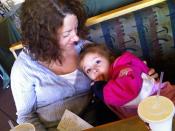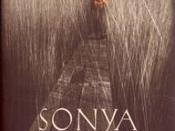The early Australian view that, due to countless hardships life becomes invaluable, the Australian belief that the land is against those who do not accept or appreciate and individuality is a common quality in frontier lifestyles, are three of the many attitudes that can be found in the text "Thursday's Child". The author Sonya Hartnett uses the characters, language and symbolism present to explore the above views.
With the aid of the characters in the text "Thursday's Child" the Early Australian view that, due to countless hardships life becomes invaluable, is portrayed. At the beginning of the text the issue of pregnancy and birth is raised as Caffy is being delivered. One of the main characters, Harper, is only seven, but doesn't see birth as a happy or exciting event. She believes she has "experienced [her] fair share of newborns." Few newborns survived in the early 1900s, and Harper doesn't understand why her family is so upset when they die, "only a baby," is how she sees it.
Her little brother, Tin, is enveloped by a wall of mud shortly after, and her father begs God to "take the new one instead" of Tin. Harper sees this as acceptable, and refers to Caffy as having "no meaning yet...because he had a good chance of dying shortly anyway," which is a very pessimistic and throwaway view on life for someone so young. The main reason Harper assumes these attitudes is through witnessing the deaths of her younger siblings. One day Caffy develops colic, and Harper finally shows some love for him and places slight value on his life, as she sees "his dying...[as] unfortunate, because [they]'d become fond of him." The readers may warm to her through this, but this is all in vain as she adds, "but at...


